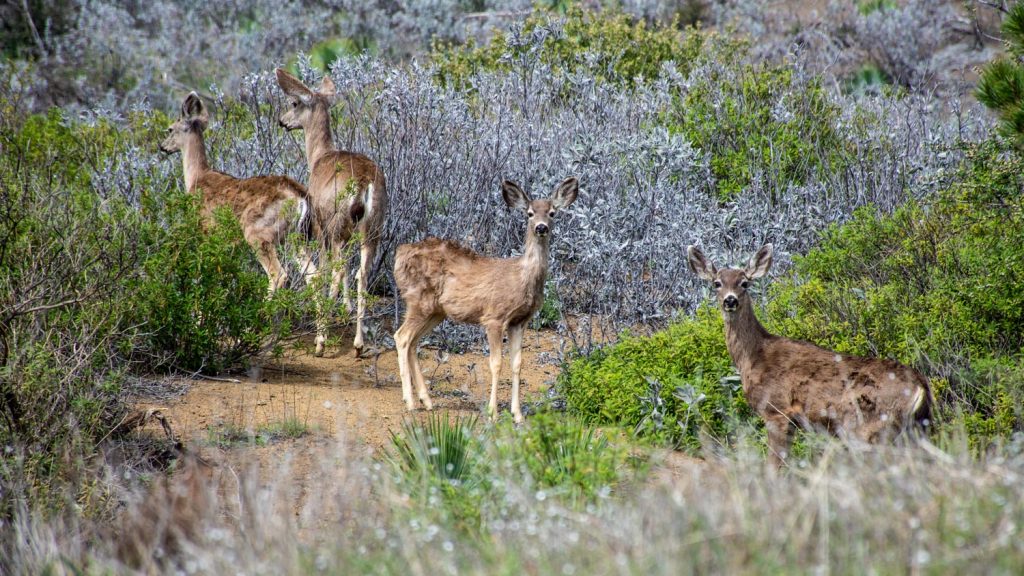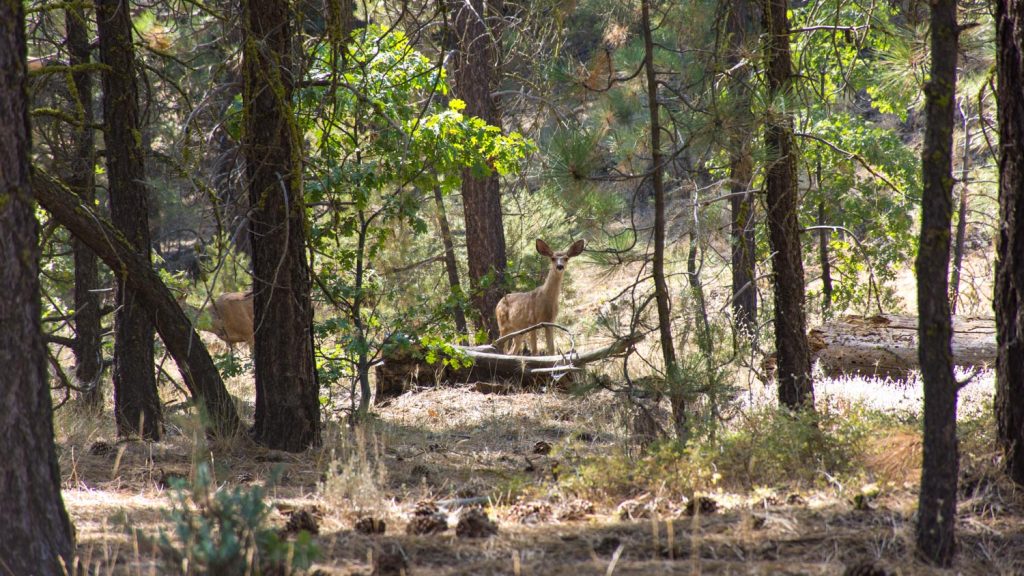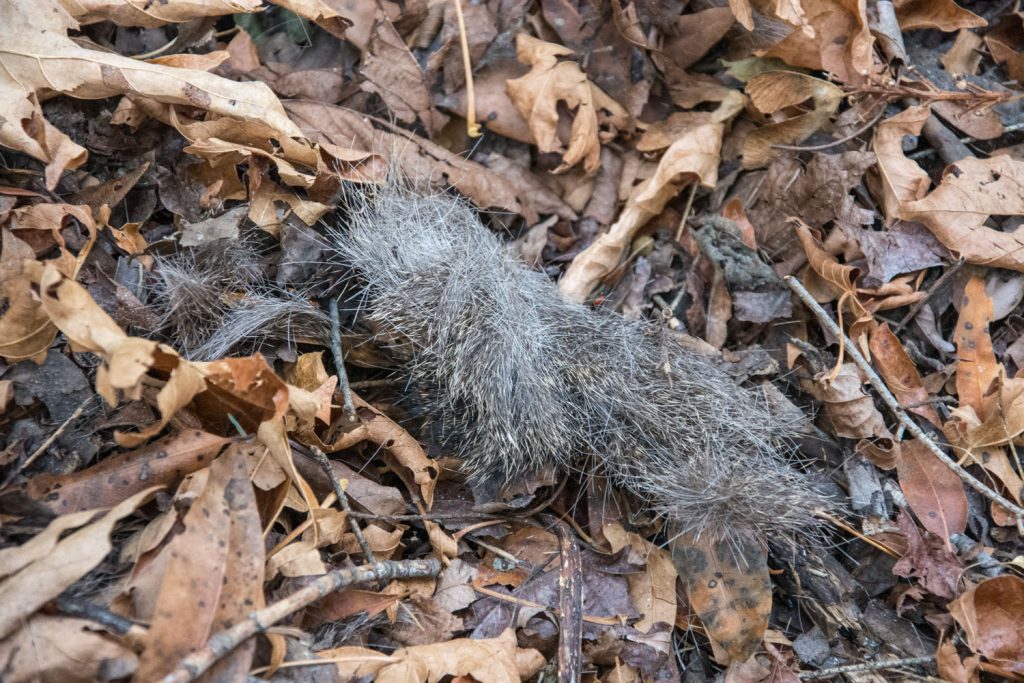
Odocoileus hemionus
The most ubiquitous of California’s native cervids (i.e. members the family that include deer, elk, moose, and similar animals), mule deer are a common sight in and around the Los padres National Forest. These common native mammals play an important role in a variety of local ecosystems.
Distribution
Mule deer can be distinguished from their white-tailed cousins in the eastern U.S. by their large mule-like ears—which are also the reason for the species’ common name—and black-tipped tails. The mule deer is indigenous to North America, mostly from the Rocky Mountains west to the Pacific and from Mexico to Alaska. There are six subspecies of mule deer found in California. The subspecies found throughout the Los Padres National Forest and surrounding lands is the California mule deer (O. hemionus fuliginatus).

Along the Central Coast, mule deer can be found in a variety of different habitats. They are often seen in oak woodland, conifer forest, chaparral, sagebrush scrub, coastal sage scrub, and recently burned areas. They also forage heavily in grass-dominated areas.
Biology and Behavior
Adult mule deer typically weigh between 100 to 350 pounds with a maximum height of 3.5 feet at the shoulders. A male deer is known as a buck or a stag while a female is known as a doe. A fawn is a young deer in its first year of life.
Male mule deer have bifurcated antlers that “fork” as they grow, meaning each side branches into two beams and each beam further divides into two tines. The number of forks or points on a mule deer is determined mainly by the age of the buck but is also dependent on other factors such as genetics and nutrition. In the spring and summer months a mule deer stag will have softly coated antlers that resemble the gentle texture of velvet. During this time period a male’s antlers will grow before hardening as fall approaches and anticipation of battles with other males for mates in the upcoming mating season.

In late summer and early fall, male and female deer will gather for a mating ritual known as the rut, an event where bucks will spar one another for the right to breed with female deer. Being a serial polygamous species, the winners of the rut will gain the right to breed with many does. Often this ritual is a right of passage and a valuable learning experience for young bucks as they lack the size, experience, and antlers to defeat a larger, more mature buck in battle.
For female mule deer, a gestation period lasts on average about 200 days. Fawns are born early spring to mid-summer, and a female doe can give birth to one to three fawn each year. The fawns are spotted at birth but begin to lose their spots as they are weaned from their mother beginning after two and a half months of life. Does continue to watch after their young for their entire first year of life, but as fawns begin to reach sexual maturity as they reach a year and a half old they will begin to separate from their mother and live on their own.
As herbivores, mule deer feed on a wide variety of plant material with foraging taking place mostly during the hours of dusk and dawn. In the spring and early summer, deer feed on soft mast such as grasses, forbs, and young tender shoots. These highly nutritious leaves contain high amounts of carbohydrates and allow deer to pack on valuable pounds of fat for winter. As autumn approaches, many soft mast food sources dwindle, so mule deer turn to hard mast nut-producing species such as acorns, bark, and buds. While lower in carbohydrate content, these hard mast items still contain quality fats and proteins that provide a critical source of food for animals during the fall and winter seasons.
Threats

Mule deer are an important mammalian species in California as they are prey for large predators such as mountain lions and coyotes. The remains of mule deer killed by such predators are important sources of carrion for scavengers such as the endangered California condor.
Fortunately, they are not threatened in California. Populations in some areas have shifted due to habitat loss, but generally the number of mule deer in the state is relatively high. However, populations do wax and wane depending on drought conditions, which can affect food availability.
Viewing Mule Deer in the Wild
The best time to see this species within the Los Padres National Forest is around dusk or dawn, as this is when they are most active. Because mule deer have eyes that sit on the sides of their head, they are capable of a 360-degree field of view. They willy typically see you before you see them.
Mule deer also have an incredible sense of smell as well, it would be best to avoid using any products that have a strong fragrance including scented laundry detergent before attempting to see a mule deer. Known to be quite skittish, it is best to avoid making a lot of noise when out looking for deer. Keep an eye out for fresh tracks along steep terrain and stay close to fresh water sources to maximize your chances of seeing a mule deer while out on your next adventure within the Los Padres National Forest.






